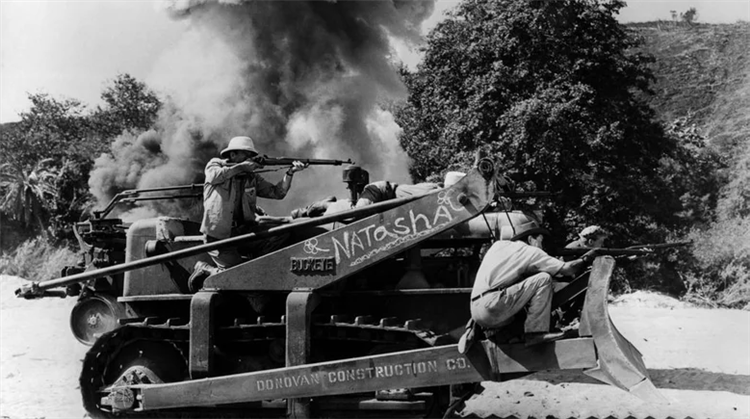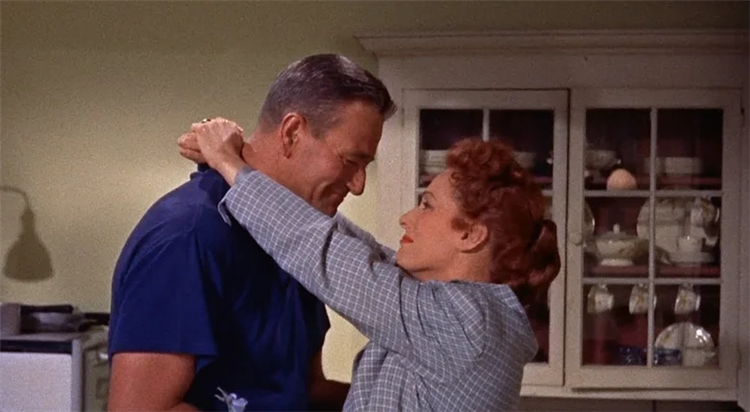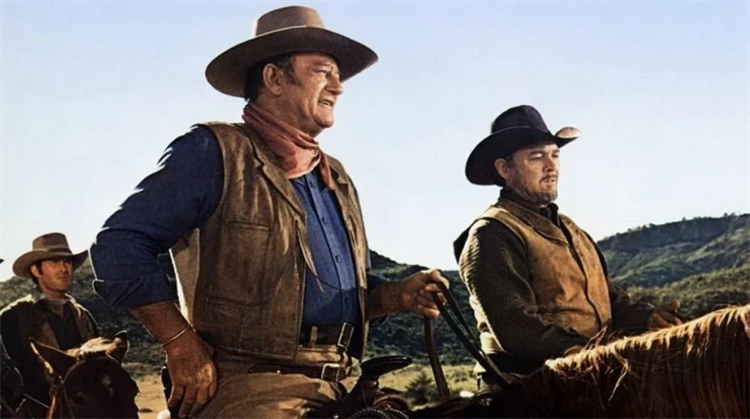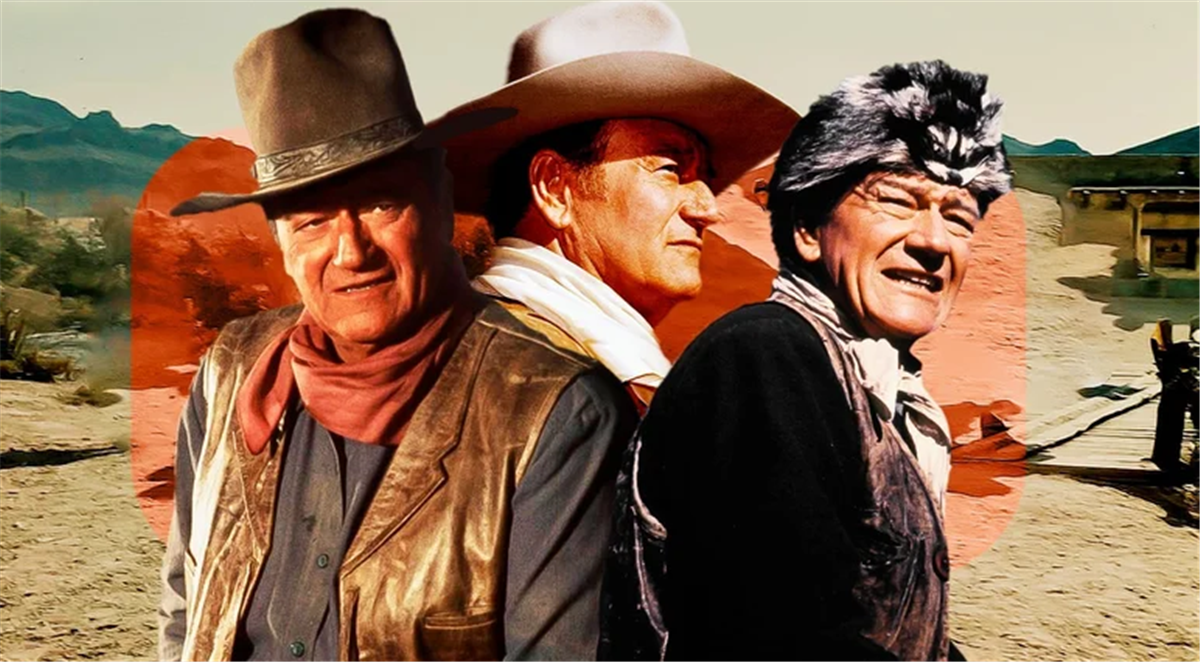When it comes to classic movie stars from Hollywood’s golden age in the ’40s and ’50s, few cast a shadow larger than John Wayne. In a five-decades-long career, Wayne became an iconic western hero — landing close to 200 performances in film and television. Wayne is one of those rare movie cowboys whose work has lived on past the genre’s peak popularity — making Wayne himself one of the most enduringly rugged stars in history.
Though we’ve already covered the greatest films in Wayne’s career, there are scores of films viewers haven’t seen. From bringing the American war effort to the silver screen at the height of World War II to dramatic turns that expanded Wayne’s range, Wayne has shown a surprising amount of acting skill. Here we’ll explore the underrated movies across Wayne’s filmography. Some titles were overshadowed by his more high-profile work whereas others have endured the test of time in the decades following their release.
Dark Command

After Wayne got his big break with 1939’s “Stagecoach,” he reunited with co-star Claire Trevor the following year for the Civil War-set western “Dark Command.” When Mary McCloud (Trevor) marries a seemingly innocent schoolteacher named William Cantrell (Walter Pidgeon), she learns her new husband is a bushwhacker raiding Confederate and Union targets. As Cantrell turns his violent attention to the town, Mary reaches out to her former suitor and pro-Union cowboy, Bob Seton (Wayne), to save the day and stop her dastardly husband.
In addition to the welcomed reunion between Wayne and Trevor on-screen, “Dark Command” features the only time Wayne teamed up with his fellow silver-screen cowboy legend Roy Rogers. If this pairing isn’t worth the price of admission alone, the chance to see Wayne square off against a well-played Pidgeon as the film’s villain certainly seals the deal. “Dark Command” solidified Wayne as a western movie star and portrayed him in a much more romantic light than “Stagecoach,” cementing his big-screen career.
Reap the Wild Wind

Wayne traded the Wild West for the high seas in his 1942 film “Reap the Wild Wind,” playing mysterious sea captain Jack Stuart. Following marine salvagers operating off the coast of Florida in 1840, the crew schemes how to maintain their command and navigate torrid love triangles. After being saved from his wrecked ship, Jack competes for the love of Loxi Claiborne (Paulette Goddard) while clashing with other captains, including the dashing Steve Tolliver (Ray Milland).
As the second-billed actor in “Reap the Wild Wind,” Wayne gets to play a much more morally ambiguous character than the predominantly noble leading roles he would subsequently take on for much of his career. Jack is a character constantly shrouded in suspicion over the fate of his previous ship. As the story progresses, he’s prone to fits of jealousy and revenge. Ultimately, Jack proves his selflessness, albeit at the cost of his life, giving Wayne an effective hero’s sacrifice that helps elevate his presence amongst a stacked cast.
The Fighting Seabees

The exploits of the U.S. Naval Construction Battalions, nicknamed the Seabees, take center stage in the 1944 war film “The Fighting Seabees.” The film follows the units responsible for quickly building airstrips throughout the Pacific Theater. Wayne plays Wedge Donovan, who chafes with his commanders over the fact that his men aren’t given weapons to fight back against the Japanese. This leads to Donovan forming the Seabees so he and his men can receive formalized military training to properly defend themselves.
One of the most striking things about Wayne’s character in “The Fighting Seabees” is that he is allowed to make disastrous mistakes — a rarity for protagonists of the era. Donovan nearly upends the war effort with his brash decisions, leading to bloody consequences. Though the film’s racist handling of the Japanese does “The Fighting Seabees” no favors, especially for modern audiences, it stands as one of Wayne’s stronger WWII films and more nuanced roles.
Back to Bataan

Of Wayne’s WWII films, the grittiest was 1945’s “Back to Bataan,” which chronicled the Pacific Theater’s brutal battle for the Philippines. Wayne plays Joseph Madden, an American officer who remains in the Philippines to organize the Filipino resistance to the Japanese occupation as the American military has to withdraw. Leading the Filipino resistance in bloody guerilla warfare, Madden witnesses Japanese war atrocities firsthand while waiting for American reinforcements to arrive.
Filmed in the midst of the liberation of the Philippines, “Back to Bataan” learned about the ongoing military campaign and incorporated it into the film’s narrative (via TCM). Wayne is more grizzled and raw here than in many of his polished roles, visibly dirtying himself up and gamely splashing through the wilderness. “Back to Bataan” could have been another paint-by-numbers quickie made to support the war effort. Instead, it provides Wayne with his most realistic war movie.
The High and the Mighty

Predating ensemble disaster movies like “The Poseidon Adventure” or “Airport” is 1954’s “The High and the Mighty.” Although Wayne receives top billing, the film is a true ensemble effort. Wayne plays Dan Roman, the first officer of an airliner traveling between Honolulu and San Francisco, which experiences catastrophic trouble in mid-flight. As tension among the passengers and crew builds, Roman resorts to desperate means to safely land the plane while deflating the brewing interpersonal conflicts.
Along with subsequent ensemble films like “The Longest Day” and “How the West Was Won,” Wayne’s magnetic on-screen presence here looms over his co-stars. Ironically, Wayne — who also produced the film — hadn’t planned on starring in “The High and the Mighty”: He only took the role when its intended star, Spencer Tracy, dropped out (per TCM). Though a bit overlong and prone to drawn-out monologues from its lead characters, “The High and the Mighty” gives Wayne the chance to show off his dramatic chops while playing off an impressive cast.
The Wings of Eagles

Wayne reunited with frequent collaborator, filmmaker John Ford, for the biopic “The Wings of Eagles.” In the 1957 film, he plays naval aviator and screenwriter Frank “Spig” Wead. In between World Wars, Wead suffers a tragic accident and becomes paraplegic. Due to his condition, he has to relearn how to walk while shifting to a writing career in Hollywood. As Wead grows closer to his family, he reenlists in active duty service upon the start of WWII, using his aviation and filmmaking experience in the Pacific Theater.
“The Wings of Eagles” is Wayne at his most vulnerable, playing a character immobilized for much of the film. Throughout the film, Wead has to rediscover his sense of self-worth and determination. He is one of the most flawed and fully realized characters in Wayne’s career, a man who neglects his family at the start of the film before being brought to his lowest point. Wayne eschews his usual big screen swagger and allows himself to go outside his comfort zone, giving “The Wings of Eagles” its effective dramatic heft.
The Alamo (1960)

Chronicling the 1836 Battle of the Alamo, “The Alamo” was a longstanding passion project for Wayne. The movie captures the pivotal siege against the Mexican army that fueled Texas’ drive for independence. Wayne’s “The Alamo” is his sole credited directorial feature work. Reportedly, it was a costly endeavor with grueling behind-the-scenes work for its first-time director. Wayne invested heavily into the film, with his production company financing $12 million towards its budget (via The Hollywood Reporter).
Clocking in at over three hours, “The Alamo” moves slowly in assembling its characters and establishing momentum. However, the second half of the film, with its defenders preparing for the inevitable onslaught and battle sequences, is genuinely rousing. Wayne stars as Davy Crockett and he plays the legendary frontiersman with subtle restraint — proving he’s more than willing to share the spotlight with his ensemble cast. Though this move may have been partially informed by Wayne’s behind-the-scenes commitments, it results in a beautifully understated performance.
North to Alaska

Wayne makes a rare foray into screwball romantic comedies with the 1960 film “North to Alaska.” In the film, he portrays gold panner Sam McCord during the Nome Gold Rush of 1901. After striking it rich in the Yukon, McCord agrees to escort his partner George Pratt’s (Stewart Granger) fiancee from Seattle to their growing business in Nome. Finding the intended fiancee has already married someone else, McCord passes off a sex worker named Angel (Capucine) as Pratt’s betrothed. But he ends up falling for her instead.
More than Wayne’s chemistry with co-stars Capucine and Granger, what really elevates “North to Alaska” is the film’s zany antagonist and scheming con artist, Frankie Canon (Ernie Kovacs). Kovacs and Wayne play off each other well, culminating in a memorable fistfight for the movie’s climax. Wayne quietly possesses a keen sense of comedic timing in “North to Alaska” — leaving me wishing that Wayne had indulged in his comical side on-screen more often.
Rio Lobo

Filmmaker Howard Hawks worked with Wayne on a loose trilogy of Westerns that followed a small band of gunfighters defending their town from a gang of outlaws. The trilogy began with 1959’s “Rio Bravo” and continued with 1966’s “El Dorado,” before concluding with 1970’s “Rio Lobo” — the latter is the final film Hawks ever directed. Easily the darkest entry in the informal trilogy, “Rio Lobo” endured negative reviews upon its initial release for being uninspired and “listless.”
Wayne plays Jim McNally, a former Union Army officer. He befriends two Confederate soldiers — despite being on opposite sides of the Civil War — and searches for a mysterious colleague who betrayed them. “Rio Lobo” is Wayne and Hawks at their most cynical, serving as a biting elegy to the Western genre. Whether or not this was the two men’s intent, Wayne is content in letting his younger co-stars take point throughout the film’s runtime, including its action sequences. To its credit, the women characters here are far more empowered than in the trilogy’s previous entries. An occasionally turgid affair, “Rio Lobo” signals the beginning of Wayne’s long goodbye to the genre that made him a star with self-aware melancholia.
Chisum

One of Wayne’s westerns rooted in actual historical events is “Chisum,” covering the 1878 Lincoln County War in New Mexico. In the 1970 film, Wayne plays the real-life figure, John Chisum. Chisum tries to keep the peace while working as a cattle baron. He takes on underhanded businessman Lawrence Murphy (Forrest Tucker), who is making a play for his land. Among the figures caught up in the escalating conflict are Pat Garrett (Glenn Corbett) and Billy the Kid (Geoffrey Deuel). Murphy uses local law enforcement as his private army.
Like “Rio Lobo,” Wayne is content to let his younger co-stars handle much of the action in “Chisum,” only occasionally becoming directly involved in the fighting. Fortunately, “Chisum” boasts a much stronger supporting cast while Wayne seems more invested in his performance as the kindly Chisum than in his role in “Rio Lobo.” “Chisum” is an overlooked gem in the latter years of Wayne’s career. The film quietly celebrates the frontier spirit and the western genre whereas its contemporaries grew cynical.
